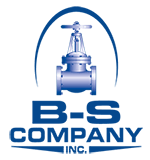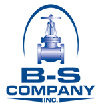Typically, when purchasing pipe, valve, fitting and flange (PVFF) products, you’ll receive a copy of the material test reports (MTR’s) for the particular PVFF item purchased. Material test reports (MTR’s) are performance measurements of a material supplier’s product. They certify that the product’s physical and chemical properties conform to industry standards. If you are uncertain how to make sense of an MTR, how to use the data it presents to decide if you are purchasing the right product, this article is for you. Here is a step-by-step guide to reading and understanding MTRs.
How to review an MTR?
If you are not accustomed to reading MTRs, they can look like a barely decipherable jumble of letters and numbers. However, they’re relatively easy to understand once you know what you are looking at and what all those figures represent. Follow these three easy steps when reading an MTR.
Step 1: Check the heat number
When you first inspect the product you are considering purchasing, you will be provided with an MTR for that product. First, check the heat number stenciled on the pipe, flange, or valve against that on the MTR, to ensure that the report matches the item you are inspecting. The heat number, also known as the melt number, is like a batch or lot number. It provides a way to trace back the steel plates to its production units and process conditions.
Step 2: Check the material grade
Steel pipes and flanges are graded according to standards set by the American Society of Mechanical Engineers (ASME) or the American Society for Testing and Materials (ASTM). The grade of a pipe or flange indicates the best purpose for which they are intended, based on their chemical composition and mechanical properties. ASTM Grade A106, for example, applies to carbon steel pipe for high-temperature service. Grade A312 indicates seamless, straight-seam welded, and cold worked welded austenitic stainless steel pipe intended for high-temperature and general corrosive service. Grade A105 applies to forged carbon steel piping components, that is, flanges, fittings, valves, and similar parts, for use in pressure systems at ambient and higher-temperature service conditions. These are just three examples of grades; your chosen item will carry one of at least 14 possible grades. By checking the material grade, you can determine whether the pipe, flange, or fitting you are looking at is the correct one for your project.
Step 3: Inspect the chemical composition
Now that you know that the report matches your chosen item, look at the chemical composition breakdown. The percentage values of specific elements in the product will be listed alongside the corresponding prescribed values in the acceptance range for those substances. These elements will include carbon (Ca), Chromium (Cr), Copper(Cu), Manganese (Mn), Molybdenum(Mo), Nitrogen (N), Nickel(Ni), phosphor(P), Sulphur(S) and silicon(Si). The chemical composition of the steel determines whether the product you are buying is fit for purpose according to the relevant ASME or ASTM standards.
Step 4: Inspect the mechanical properties
Once you are satisfied with the chemical composition, the next thing to do is inspect the mechanical properties of your flange, pipe or valve. The table will state the yield strength, tensile strength, elongation, reduction in area, and hardness and compare them against the standard acceptance values. These figures are the results of a battery of tests that steel products undergo throughout the forging and fabrication processes.
MTR’s (Mill Test Reports) provide a record of traceability and a full report of the properties of your material. This record ensures that the material will perform in the way it was intended. Deviations from product specification values can have consequences for the performance and safety of the applications in which the steel is ultimately used. The ability to review an MTR helps you to ensure that you are buying the right material and to avoid project risks.
About BS Company
BS Company opened its doors in 1990 at a small 8,000 sq/ft location, “The Office” in Magna, UT. We’re grateful for the growth we’ve seen over the years and now operate three branches and one manufacturing facility. Our inventory consists of:
- 6,000 + tons of pipe ON THE GROUND! (300 semi truckloads)
- 1,500 + tons of fittings & flanges ON THE GROUND! (75 semi truckloads)
- 10,000 + valves ON THE GROUND
Our pipe and fitting inventory is held at our “Pipe Yard” in Toole, Utah. The “Pipe Yard” boasts much more than its name. There are 30 acres of carbon steel pipe, HDPE pipe, and large OD carbon steel fittings and flanges on the ground at this location.
A new 10,000 sq.ft. warehouse stocked with large OD valves was added in 2014. We have pipe sizes up to 108”, fittings & flanges up to 48”, valves up to 36”, and stainless steel fittings & flanges, studs & nuts, and more on this site.
All of our flanges, pipes and valves comply with all applicable industry standards and are accompanied by material test reports. Contact us for more information.


